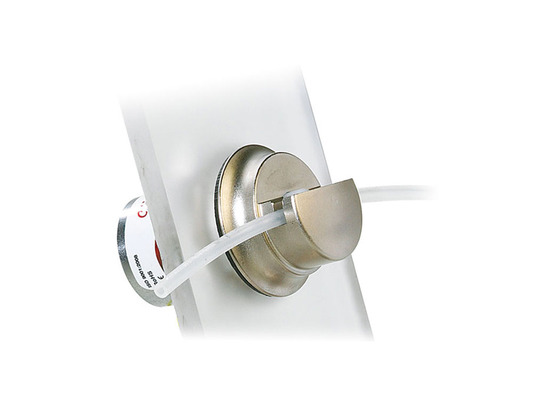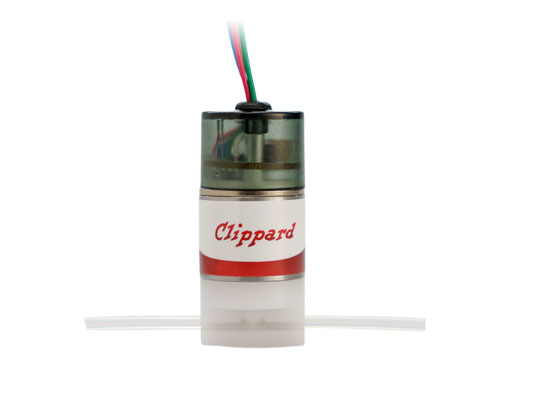Solutions for Cleanly & Efficiently Controlling Blood Flow in Dialysis Equipment
In hemodialysis systems, few components are as central—or as scrutinized—as the valves responsible for controlling blood flow. These systems must operate with uncompromising reliability, cleanliness, and precision, which places significant demands on fluid-control components. In this article, we examine why pinch valves have become a preferred solution for dialysis equipment and explore the engineering considerations behind their use, including complete fluid-path isolation, compatibility with disposable tubing sets, operational factors such as noise and heat, chemical resistance for harsh washdown environments, and the growing need for real-time position feedback to enhance patient safety.

Critical Performance Needs Met by Pinch Valves
- Sterility and isolation of the blood path
- Seamless integration with disposable tubing harnesses
- Long-duration reliability during multi-hour treatments
- Chemical resistance for aggressive clinical cleaning processes
- Safety assurance through valve-state verification
Pinch valves have emerged as a preferred solution because they provide a clean and isolated method of occluding flexible tubing without introducing new contamination risks. Their operating principle—actuating externally on a disposable bloodline—fundamentally aligns with the stringent cleanliness and performance requirements of medical devices designed for interaction with whole blood.
Clean Fluid Isolation with No Internal Wetted Components
The fluid path in dialysis equipment must remain completely sterile, unobstructed, and free of any internal hardware that might introduce contamination or shear stress. Pinch valves meet these challenges by compressing flexible tubing externally rather than allowing blood to flow through internal valve bodies or moving mechanical parts. This ensures the blood never contacts any valve component, eliminates crevices or dead volume where blood cells might become trapped, and maintains a smooth, unobstructed channel ideal for the transport of whole blood.
This clean external actuation makes pinch valves especially valuable in systems where blood components are sensitive to mechanical stress. By allowing blood to remain inside a continuous length of disposable tubing, designers can avoid issues like hemolysis, clot formation, or flow restriction caused by complicated internal geometries.
This design emphasis on ease of integration ensures that technicians can transition efficiently between patients without compromising performance, and manufacturers can design clean, modular architectures built around reliable disposable components.
Addressing Operational Challenges: Noise, Heat, and Chemical Resistance
Dialysis equipment frequently operates for three to five hours per treatment—often at the patient’s side—making operational comfort a key consideration in valve selection. Electromechanical actuation can introduce noise or vibration, which can be distracting or uncomfortable during long procedures. Clippard’s pinch valves use refined actuator geometry and smooth motion profiles to reduce audible clicking or humming, supporting a quieter, more patient-friendly environment.
Heat generation poses a second challenge. Because valves may remain energized for extended periods, thermal buildup can degrade tubing or jeopardize nearby electronics. Clippard’s pinch valves are built with high-efficiency actuation and thermally stable coil and armature designs that help keep heat output low, preserving both tubing integrity and the longevity of surrounding components.
Finally, dialysis machines undergo aggressive cleaning cycles, exposing external components to harsh disinfectants. Valves must withstand these repeated washdowns without swelling, cracking, or leaking. Clippard’s pinch valves use chemically resistant housings and sealed actuator assemblies to provide long service life even in high-exposure environments.
Enhancing Patient Safety Through Feedback and Verification
Modern dialysis systems increasingly rely on active monitoring to ensure every valve in the circuit performs as commanded. When blood is being pulled from and returned to a patient in real time, it is essential to verify that every valve opens and closes exactly when expected. Clippard’s pinch valves can incorporate integrated position feedback that provides an electrical signal confirming the valve’s actual state. This enables control systems to detect faults, validate operational timing, and implement redundant safety logic.
Real-time verification not only supports regulatory compliance but also reduces risk for both clinicians and patients by ensuring that any deviation from expected valve behavior is detected immediately.
A System-Level Advantage for Dialysis Equipment Designers
Taken together, these characteristics—complete fluid isolation, seamless compatibility with disposable tubing, low-noise and low-heat operation, durability under repeated chemical exposure, and real-time actuation verification—make pinch valves a system-level advantage in dialysis equipment design. They simplify sterilization workflows, reduce internal fluid-path validation requirements, and support modular machines built around disposable components.
To explore more details on how Clippard has engineered modifications specifically for dialysis applications, download the Pinch Valve Modifications Flyer (PDF), which highlights real examples and design solutions used by leading medical-device manufacturers. Ready to get started? Contact us today.
|
Related Products |
||||
|
Electronic Pinch Valves  |
Panel Mount Electronic Pinch Valves  |
State Feedback Pinch Valves  |
Pneumatic Pinch Valves  |
|





